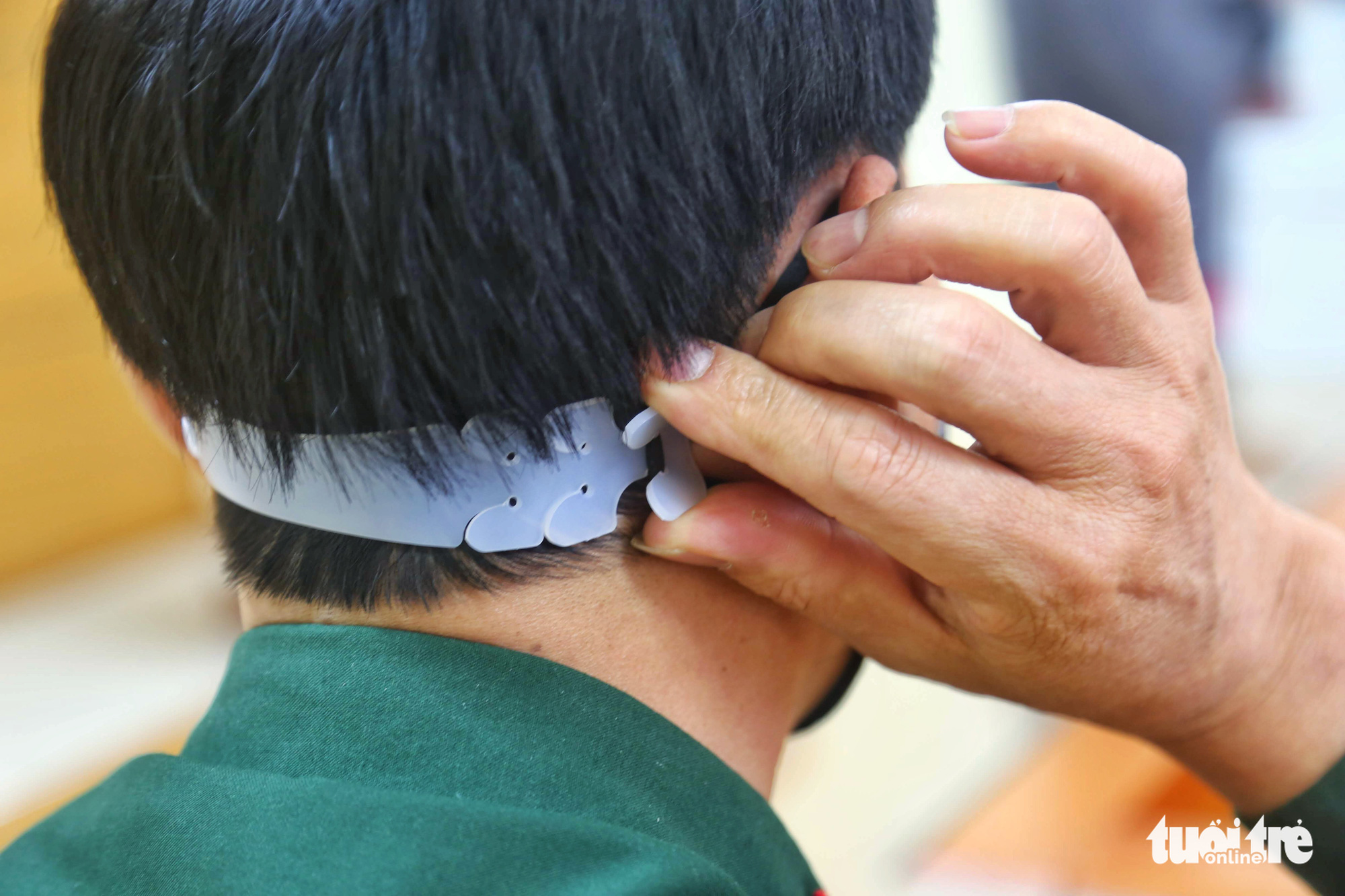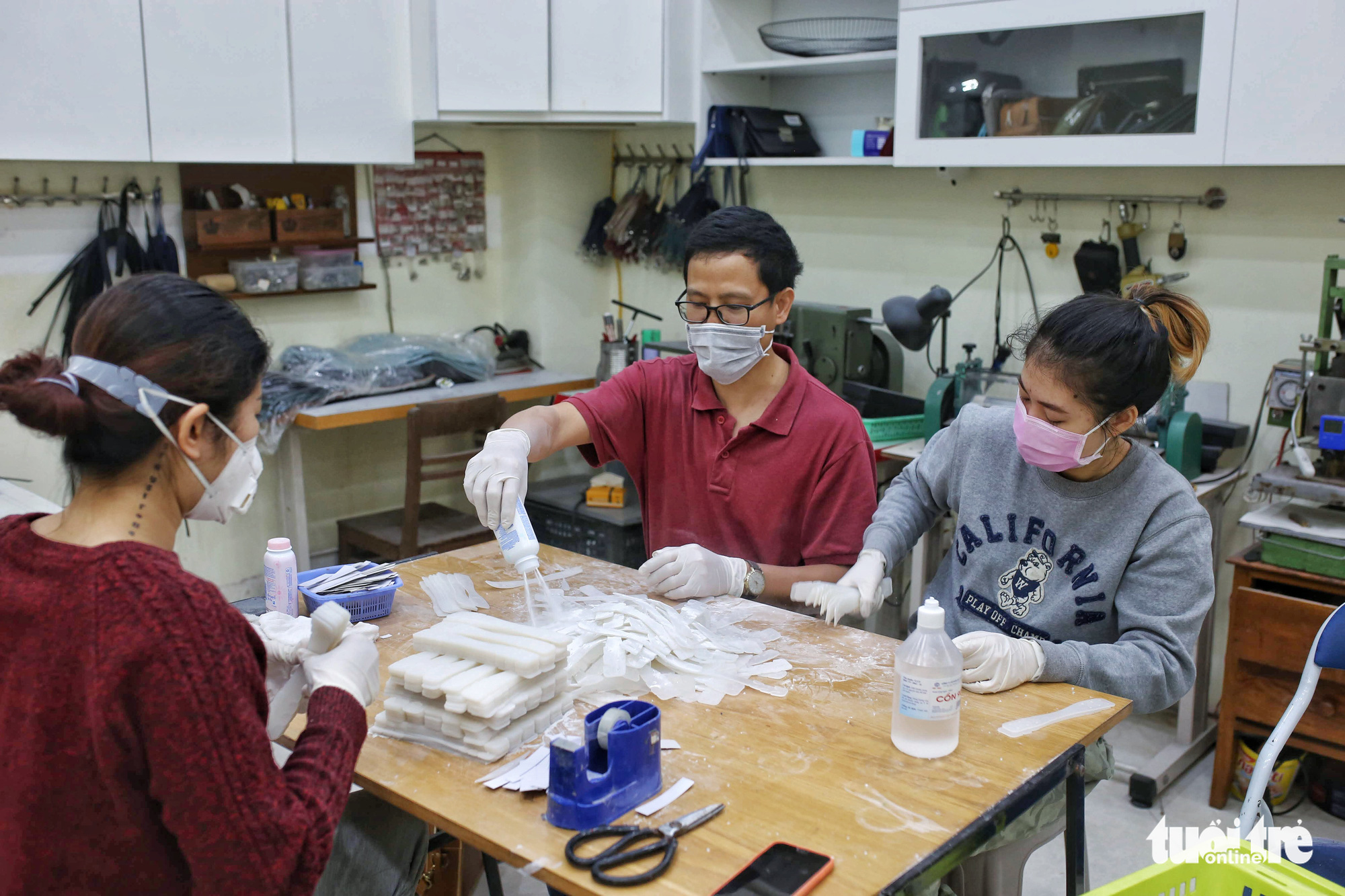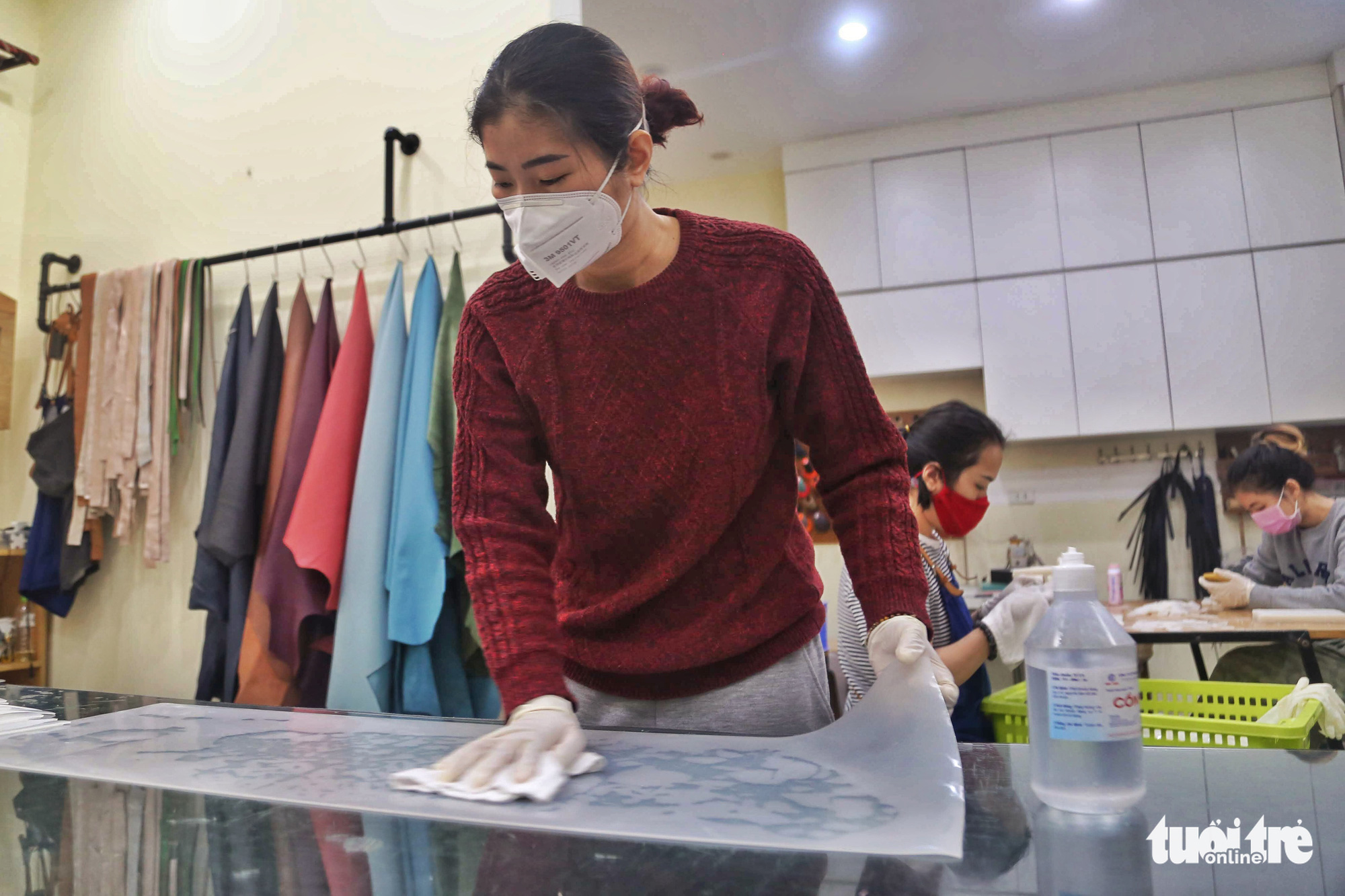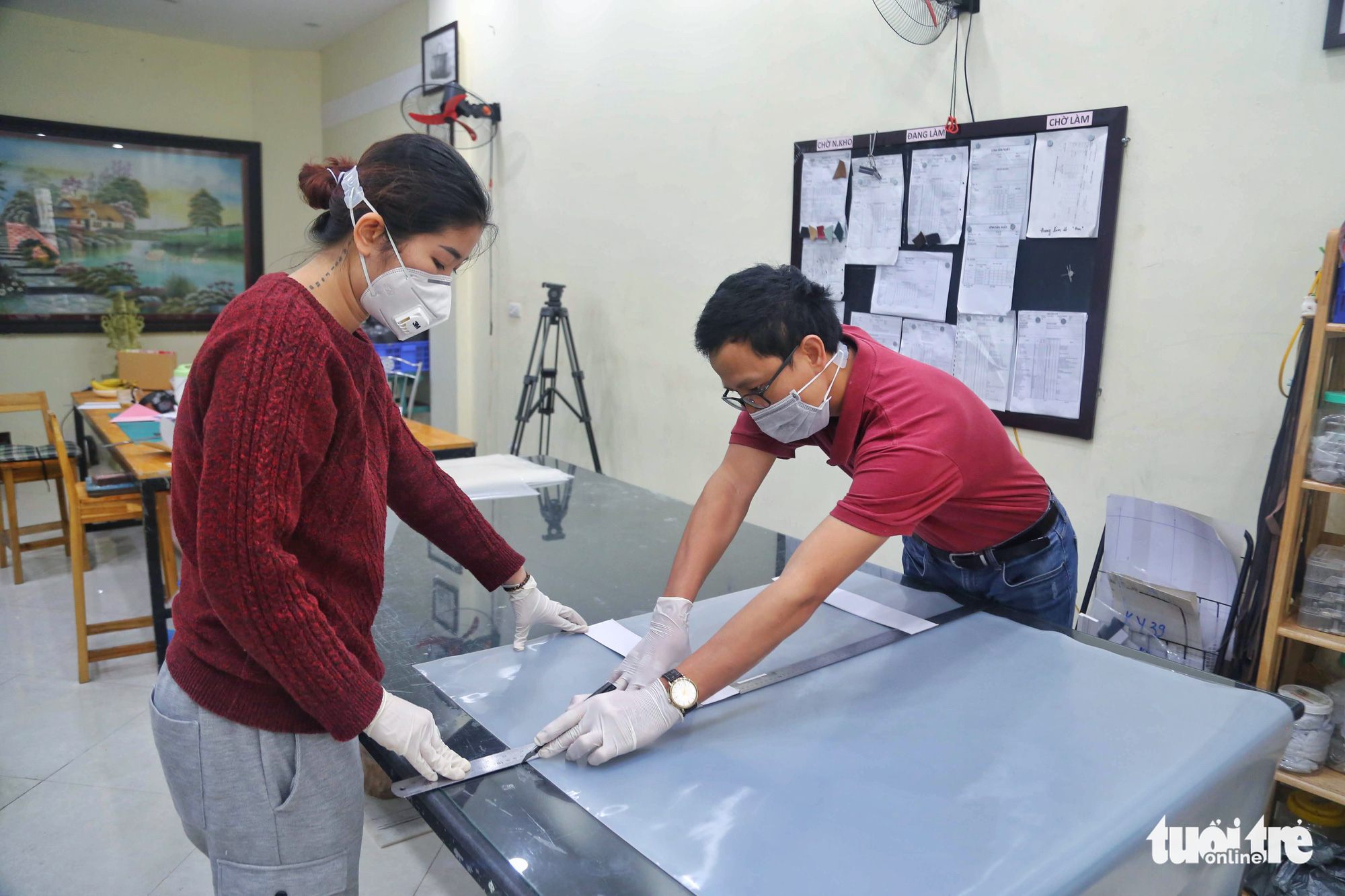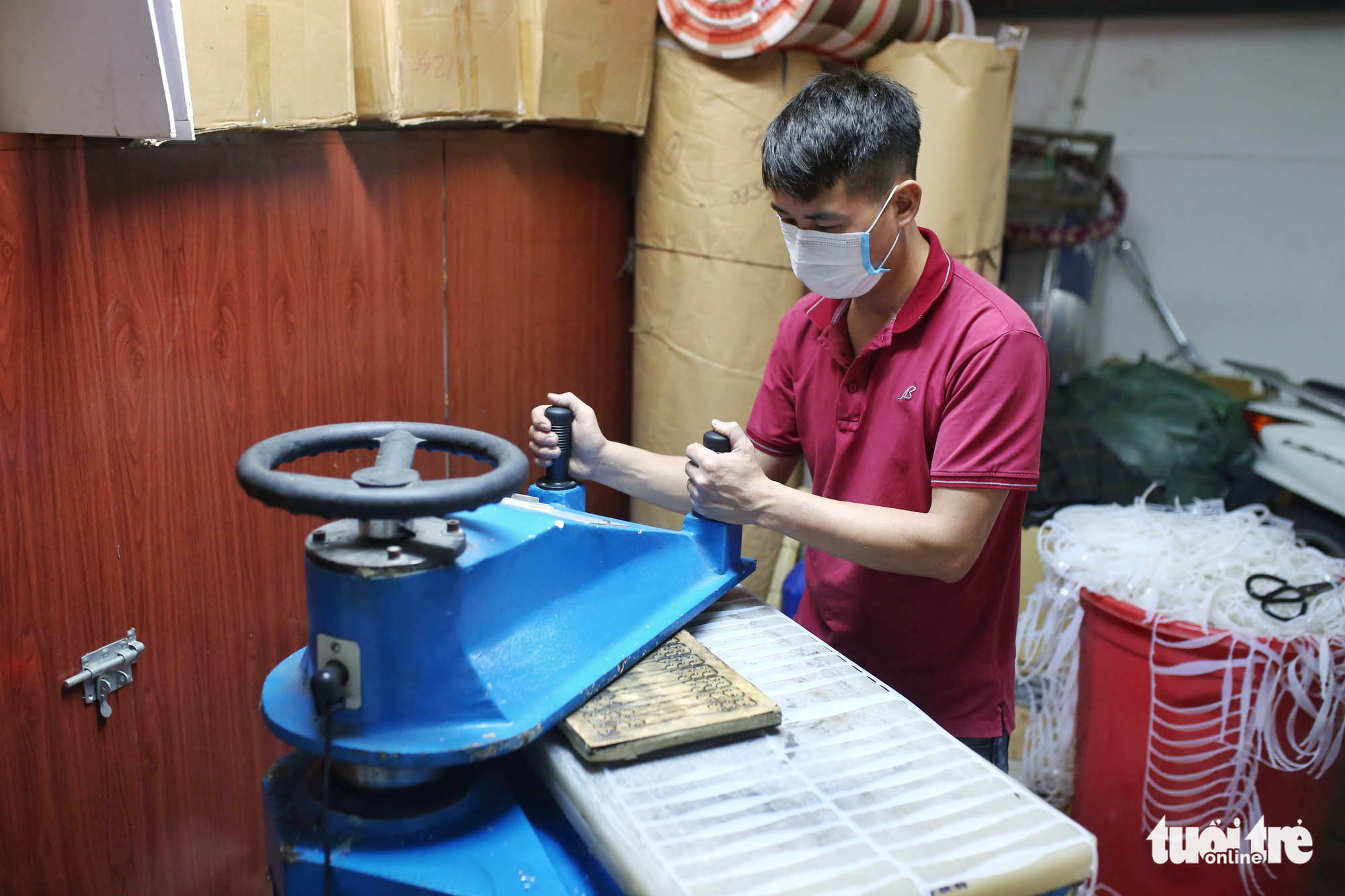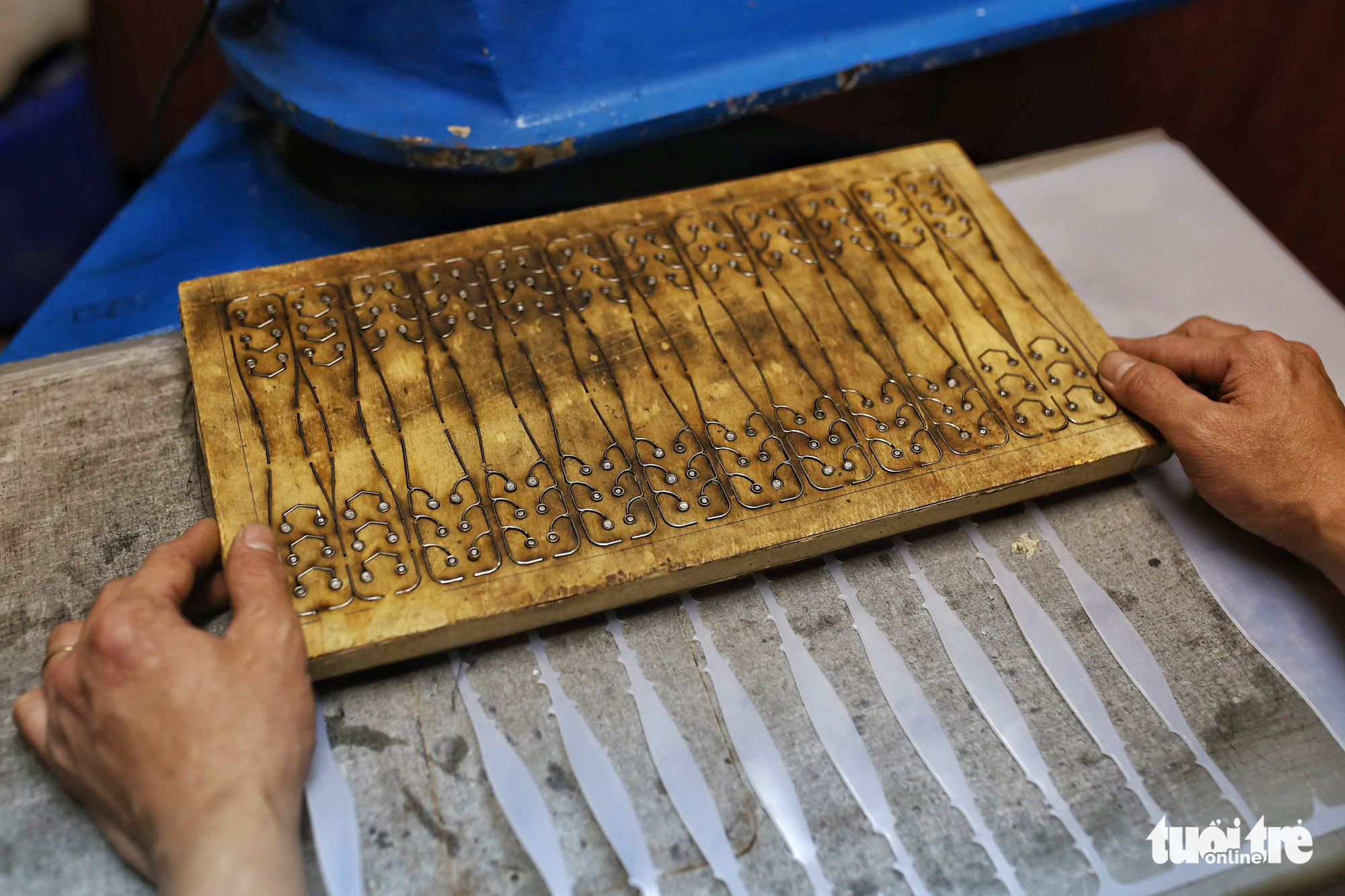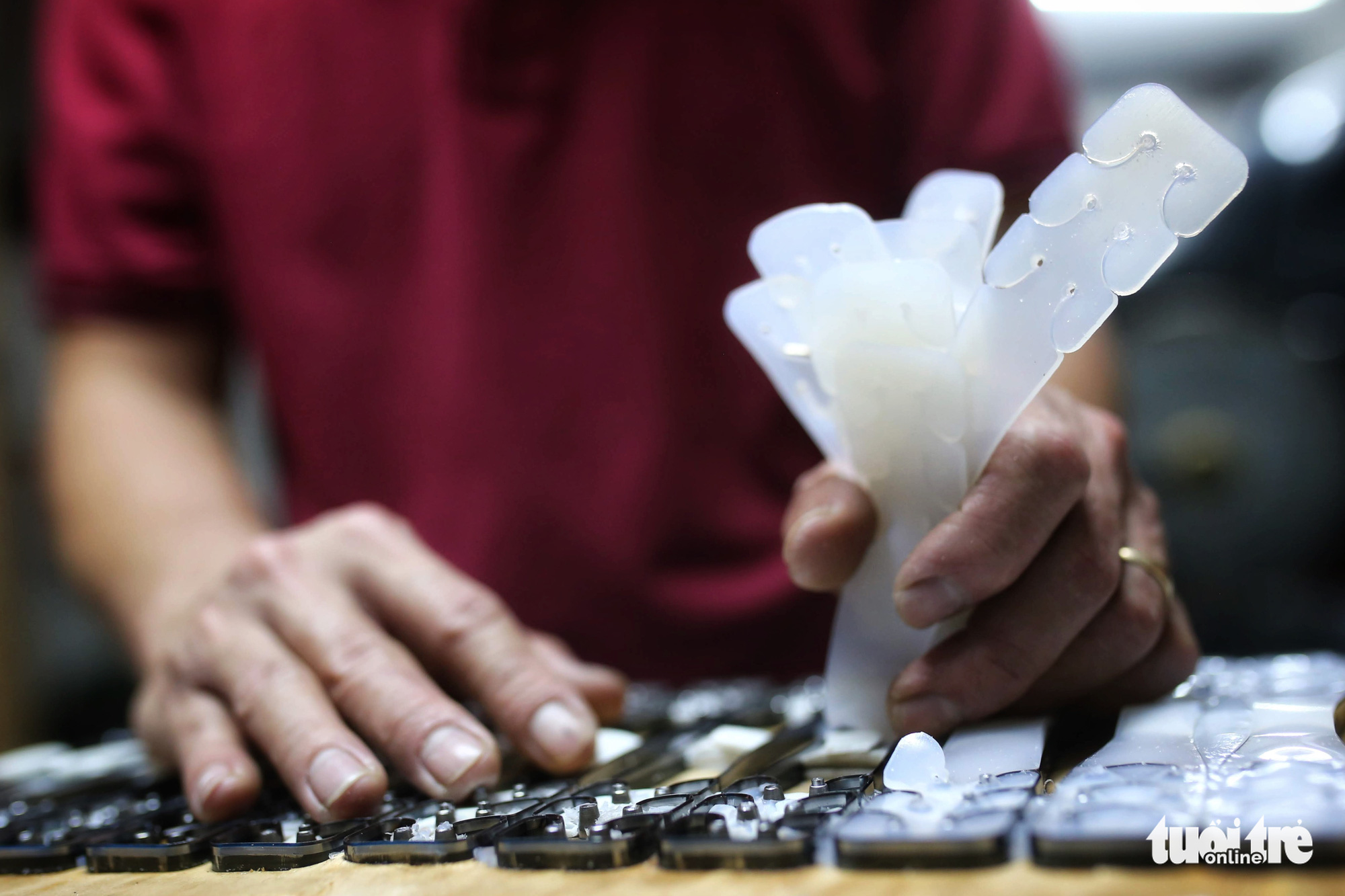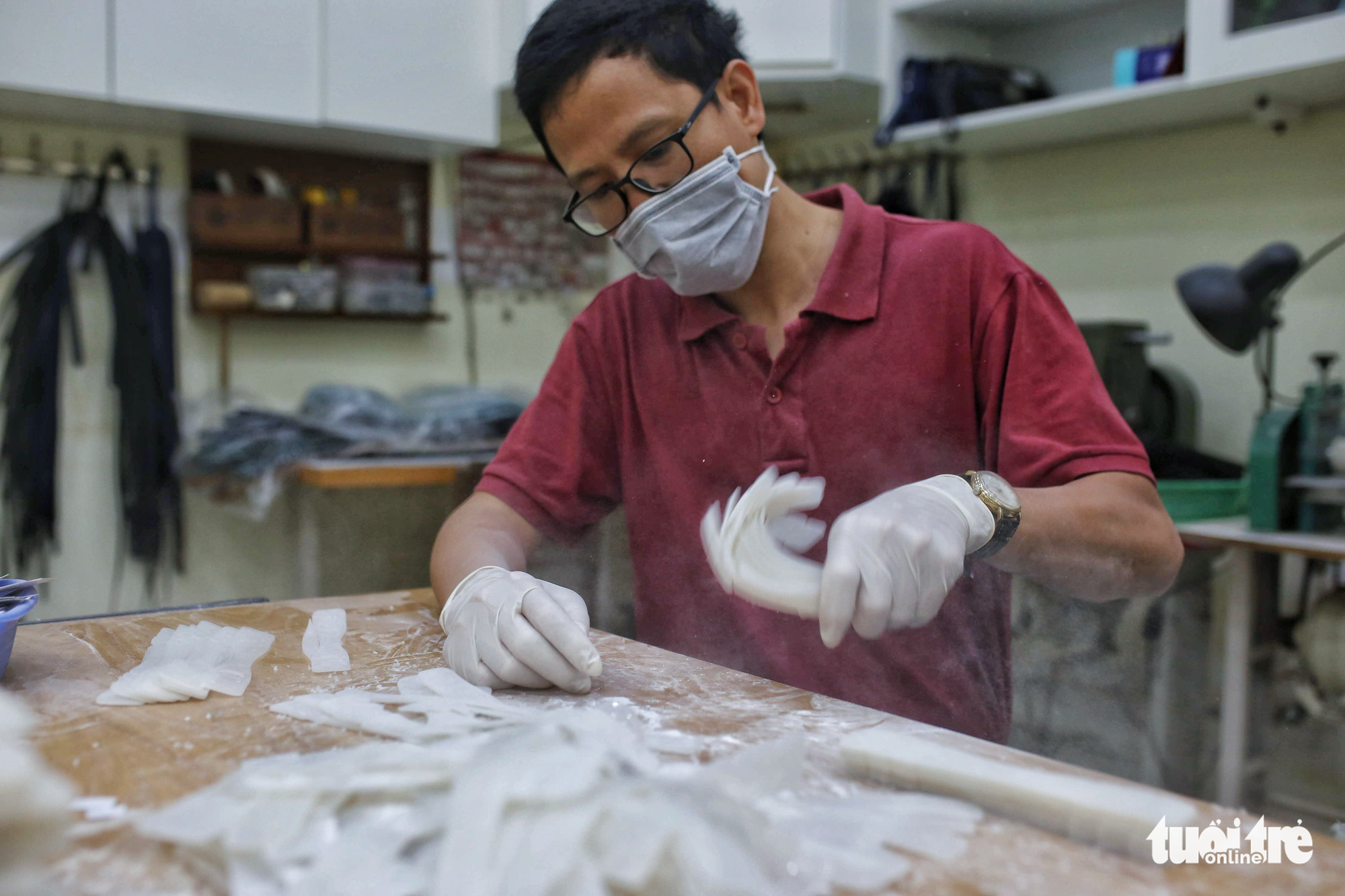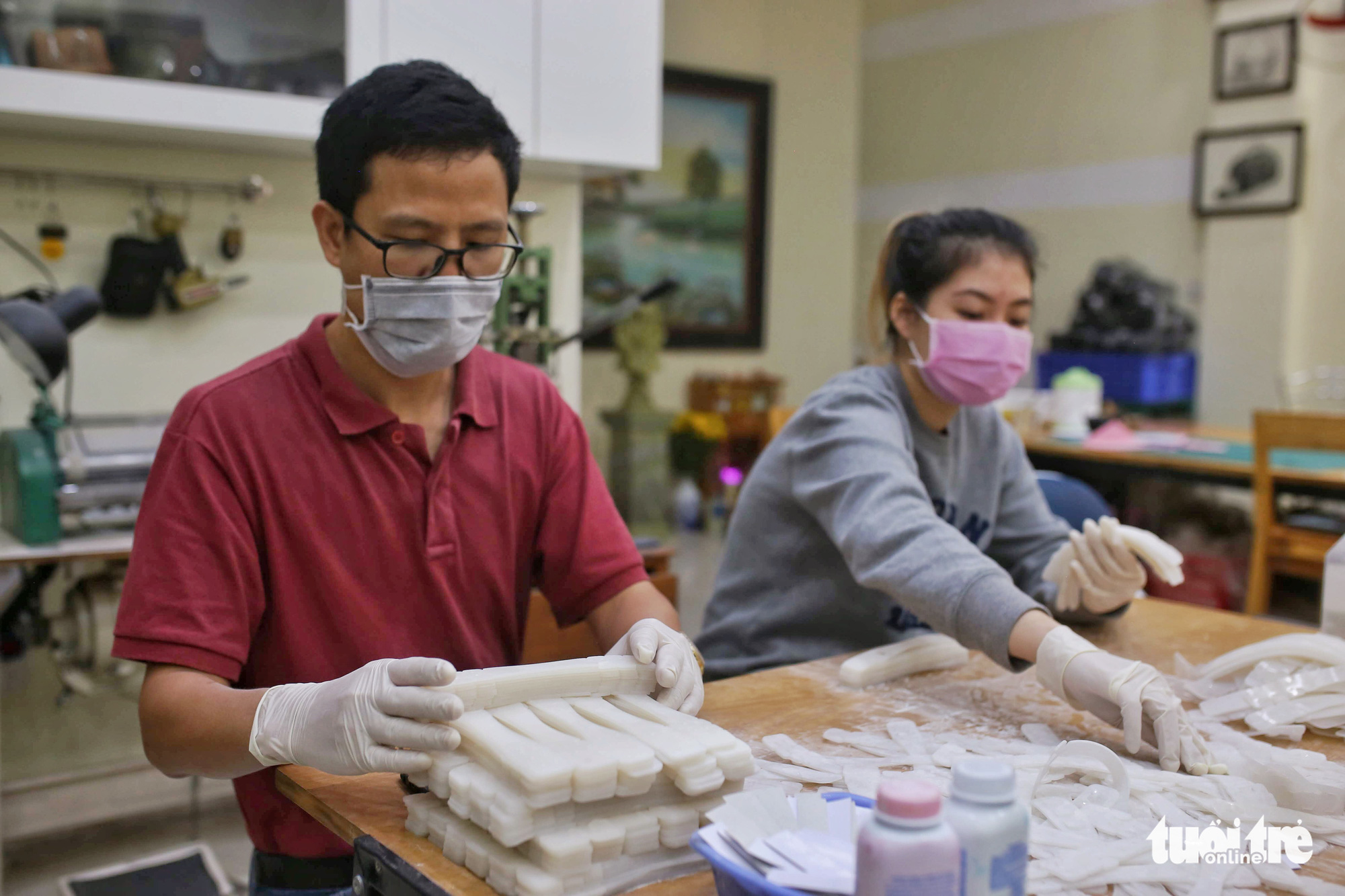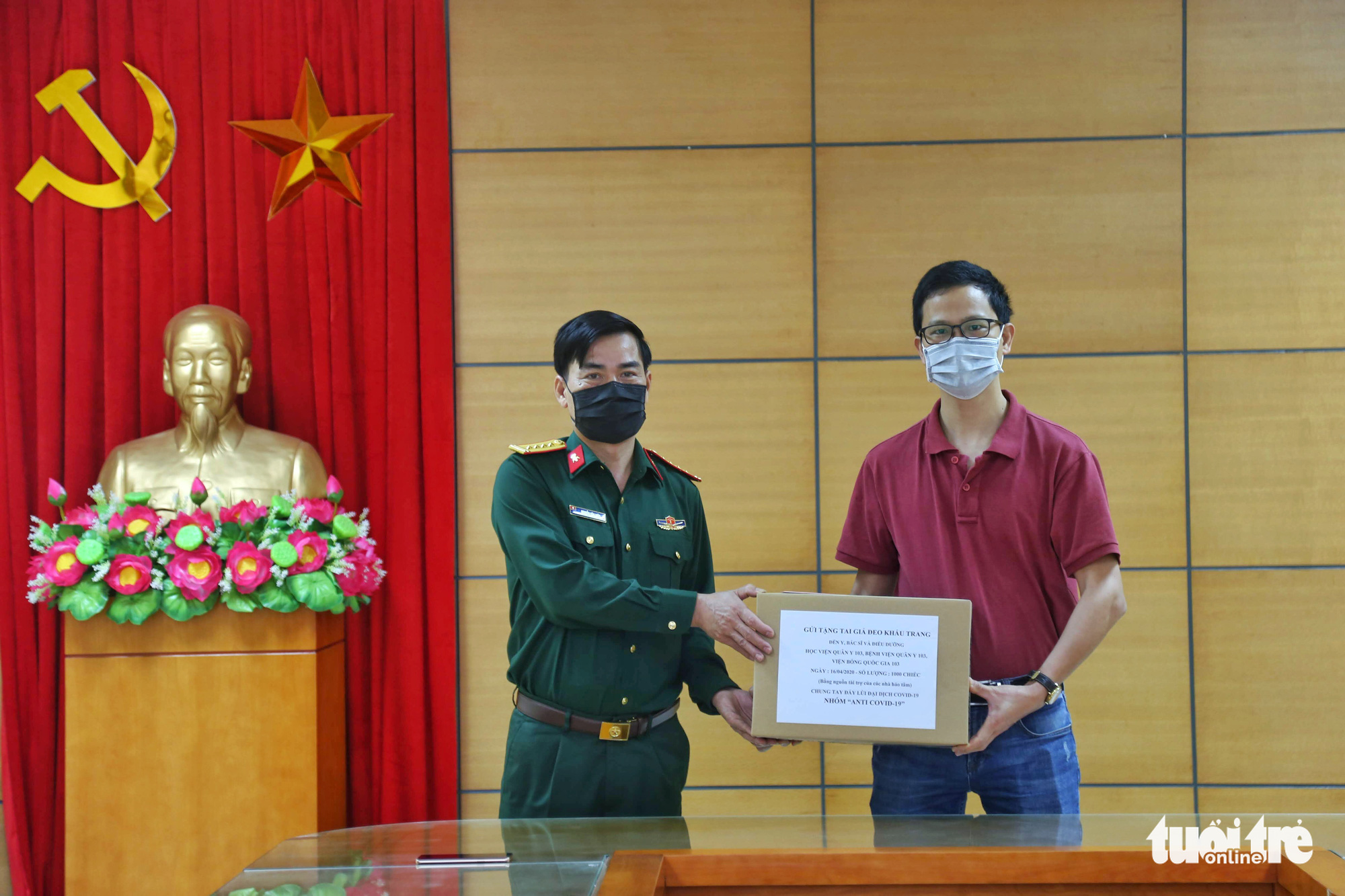Seeing the frontliners struggling to cope with novel coronavirus disease (COVID-19), a group of volunteers in Hanoi have invented a unique product to relieve pain caused by tension on the ears of medical workers who have to wear face masks for hours on end.
After playing with the idea for two days, ‘Anti COVID-19,’ a volunteer group in Hanoi, began the production of what they call 'artificial ears' as a tool to help doctors avoid ear pain caused by wearing face masks.
The gadget, which goes behind the head, has hooks that attach to the straps of a medical mask and help take the pressure off the backs of the wearer’s ears.
“This product is based on the idea of a Canadian boy during the COVID-19 outbreak,” said Phan Manh Ha, a group member.
“I have experience in crafting leather goods, so creating such a product is not so difficult,” Ha, who runs a leather business in Cau Giay District, Hanoi, added.
Previously, 12-year-old Canadian boy Quinn Callander made the news after he had created hundreds of such ear guards from home using a 3D printer and donated them to healthcare workers around the world.
For Anti COVID-19, the difficulty lies in sourcing materials. The team has had to transport silicon — the main material in making the bands — from Ho Chi Minh City to Hanoi.
Thanks to donors, the whole process has been going smoothly.
|
|
| Workers make ear guards at a facility in Hanoi, Vietnam. Photo: Mai Thuong / Tuoi Tre |
According to Nguyen Thi Thuy Trang, co-founder of Anti COVID-19 and the product’s designer, the idea came up when she talked to a doctor at the National Institute of Hematology and Blood Transfusion and learned that medical workers there needed a product to help them reduce the ear pain caused by long hours of wearing face masks.
The 'artificial ears' are small pieces cut from a large sheet of silicon and then disinfected with alcohol, and coated in talc powder to reduce friction on the skin of the wearer.
A single tension release band can be reused many times, with adjustable hooks to fit different head sizes.
“Some people advised us to use leather, but since leather is easy to catch and retain bacteria, we decided to use silicon,” Trang said.
During the first trial, 400 'artificial ears' were sent to the National Institute of Hematology and Blood Transfusion and Bach Mai Hospital for doctors to test them.
“Feedback was positive. The doctors said using our product helped to bring them comfort when wearing face masks,” Trang said.
According to the volunteer group, over 8,000 of their surgical mask tension release bands have been produced and will be sent to frontline hospitals such as the National Hospital of Tropical Diseases in Hanoi and centers for disease control and hospitals in other provinces and cities throughout the country.
|
|
| A volunteer group makes ear guards at a facility in Hanoi, Vietnam. Photo: Mai Thuong / Tuoi Tre |
|
|
| A worker disinfects a silicon sheet with alcohol at an ear guard making facility in Hanoi, Vietnam. Photo: Mai Thuong / Tuoi Tre |
|
|
| Two members of a volunteer group in Hanoi, Vietnam cut a silicon sheet into small pieces to be made into ear guards. Photo: Mai Thuong / Tuoi Tre |
|
|
| A worker operates a hydraulic press to stamp out ear guards from a silicon sheet at a facility in Hanoi, Vietnam. Photo: Mai Thuong / Tuoi Tre |
|
|
| A mold is used in making ear guards at a facility in Hanoi, Vietnam. Photo: Mai Thuong / Tuoi Tre |
|
|
| A worker removes ear guards from the mold at a facility in Hanoi, Vietnam. Photo: Mai Thuong / Tuoi Tre |
|
|
| Phan Manh Ha, a member of the volunteer Anti COVID-19 group, shakes excess talc powder off finished ear guards before packaging at a facility in Hanoi, Vietnam. Photo: Mai Thuong / Tuoi Tre |
|
|
| Workers package finished ear guards for delivery to hospitals at a facility in Hanoi, Vietnam. Photo: Mai Thuong / Tuoi Tre |
|
|
| Phan Manh Ha (right), representing the volunteer Anti COVID-19 group, presents 1,000 ear guards to doctors at 103 Military Hospital and the National Institute of Burns in Hanoi, Vietnam, April 16, 2020. Photo: Mai Thuong / Tuoi Tre |
Like us on Facebook or follow us on Twitter to get the latest news about Vietnam!



